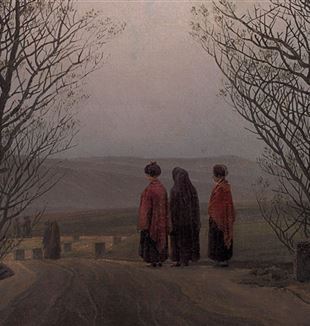
The Tradition of the Easter Poster
“The posters serve a pedagogical purpose and, in fact, some of them can form us in ways that we only see, understand, and verify in time.”The tradition of the Easter poster was introduced by the Movement in 1982. Since 1997, Communion and Liberation has also been printing and distributing Christmas posters. Some forty years later, they have become a part of the canon of Communion and Liberation, and many of us wait with expectation for the issuance of the latest edition to hang in our homes.
These posters hanging on kitchen or living room walls have become almost ubiquitous in the homes of those of us of the Movement. Why is that? For me, it is very simple. They are first of all beautiful and catch one's attention immediately on entering a room. But even more than this fact, the content is always provocative and challenging. The posters serve a pedagogical purpose and, in fact, some of them can form us in ways that we only see, understand, and verify in time. The content — most often a short text from a Father of the Church, a novelist, a poet, or a pope, accompanied by a short text from Fr. Giussani — dwell with and in us for at least a year, if not longer, and can challenge our way of living, our mentality, and our understandings of God and ourselves. While there are many Easter posters that have moved me through the years, I would briefly like to mention two.
The first one is from 1999 — the first Easter after I met the Movement in the fall of 1998. It has a quote from Mounier on suffering which has remained with me for nearly 35 years. Quite simply it was the first time in my life that I was provided an entry point to begin comprehending the mystery of suffering. The second is from 2012 and is the only one of them that remains permanently on the wall of my home office. The quotation from Soloviev's Tale of the Antichrist is simply one of the most striking of all of literature. How can one work in the same way after being confronted explicitly with the phrase "[w]hat we hold most dear in Christianity is Christ Himself" again and again. I share these simple examples to suggest how the content of these Easter posters can enter into our person if we allow them to do so, which is why I find myself joyfully awaiting the new one each Easter and each Christmas.
I hope that each of us can avoid the temptation to quickly set the new Easter poster aside and that instead we can allow it to remain with us and seep into our beings over at least the next year. In doing so, perhaps next year we will find ourselves different persons.
Steve, Silver Spring, MD